Cherry blossoms on the bank planted by Sophia University students
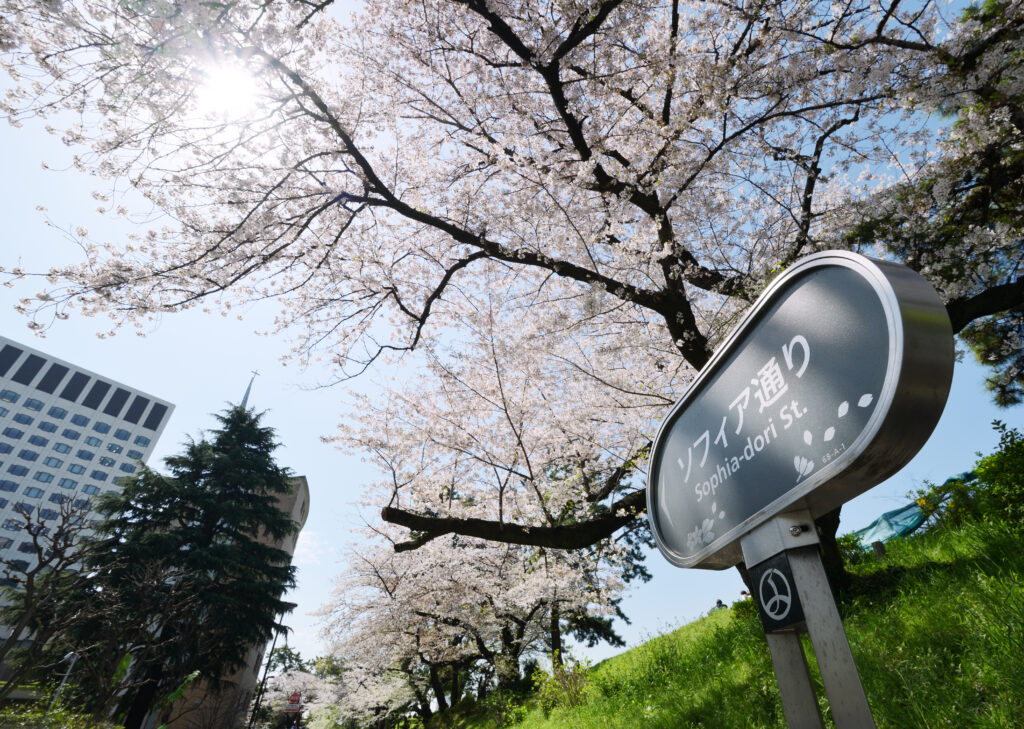
The Sanada-bori Bank is one of the most popular cherry blossom viewing spots in Chiyoda-ku, which can be enjoyed from the windows of a Chuo Line train. These large cherry trees with long branches have been watching over Sophia University students for many years. Did you know that these cherry trees were actually planted by Sophia University students?
1.Cherry tree planted to celebrate graduation

In spring, Sophia Street along the Sanada-bori (moat) between Yotsuya Station and the Hotel New Otani attracts large numbers of visitors in search of cherry blossoms. Before Corona outbreak occurred, there were people who set up blue sheets on the bank in the morning to reserve a spot to view the cherry blossoms in the evening. Although it is now regarded as a favorite cherry blossom viewing spot in Chiyoda Ward, before World War II, the bank of the Sanada-bori was covered with only black pines, and the bank from the university onward was overgrown with tall kaya (Japanese cypress) trees. The first person to plant a cherry tree on the bank was Akio Satake, a senior in the English Department of the Faculty of Foreign Studies at Sophia University in 1959.
As the captain of the karate club, Satake had nurtured the club into the largest sports club on campus. He had a fulfilling university life, having met admirable seniors. As graduation approached, he felt a strong desire to leave something behind at his alma mater. That’s when he came up with the idea of planting cherry trees as a commemoration.
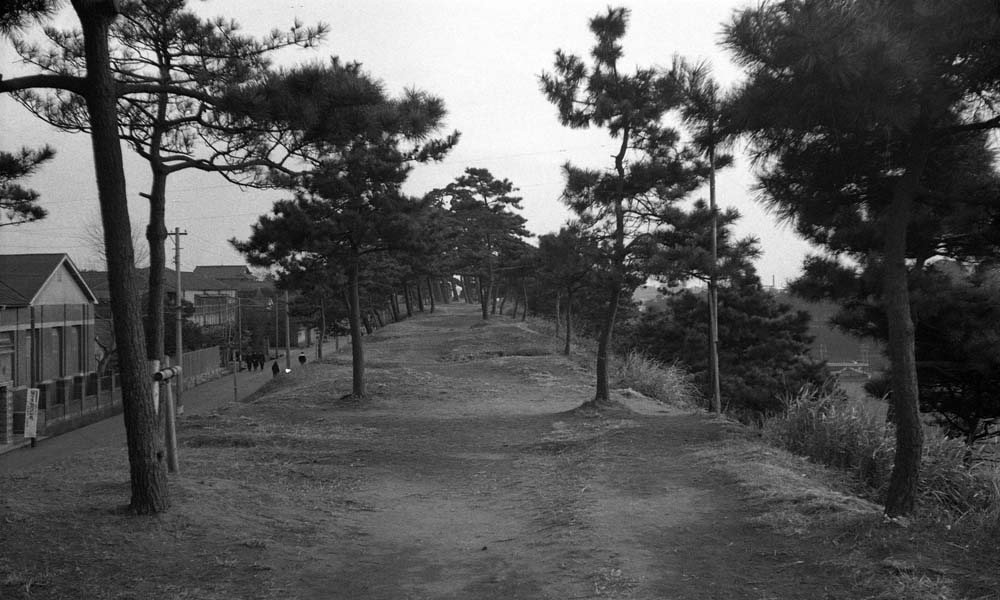
According to Satake, the road along the embankment was desolate and dim until the construction of Hotel New Otani in 1964. As the captain of the karate club, he often practiced there and found it to be a dreary place. Inspired by the thought of creating a lively spot, he decided to plant cherry trees for future generations to enjoy hanami (flower viewing) and sake under the blossoms.
To plant the trees, he first went to the Chiyoda Ward Office, which manages the bank, to ask for permission. Although the number of trees to be planted was decided to be 60, equal to the number of Karate team members, the biggest challenge was to raise the funds to buy the plants. Since the amount of money being sent from home had already run out, he pawned his clothes to raise the money.
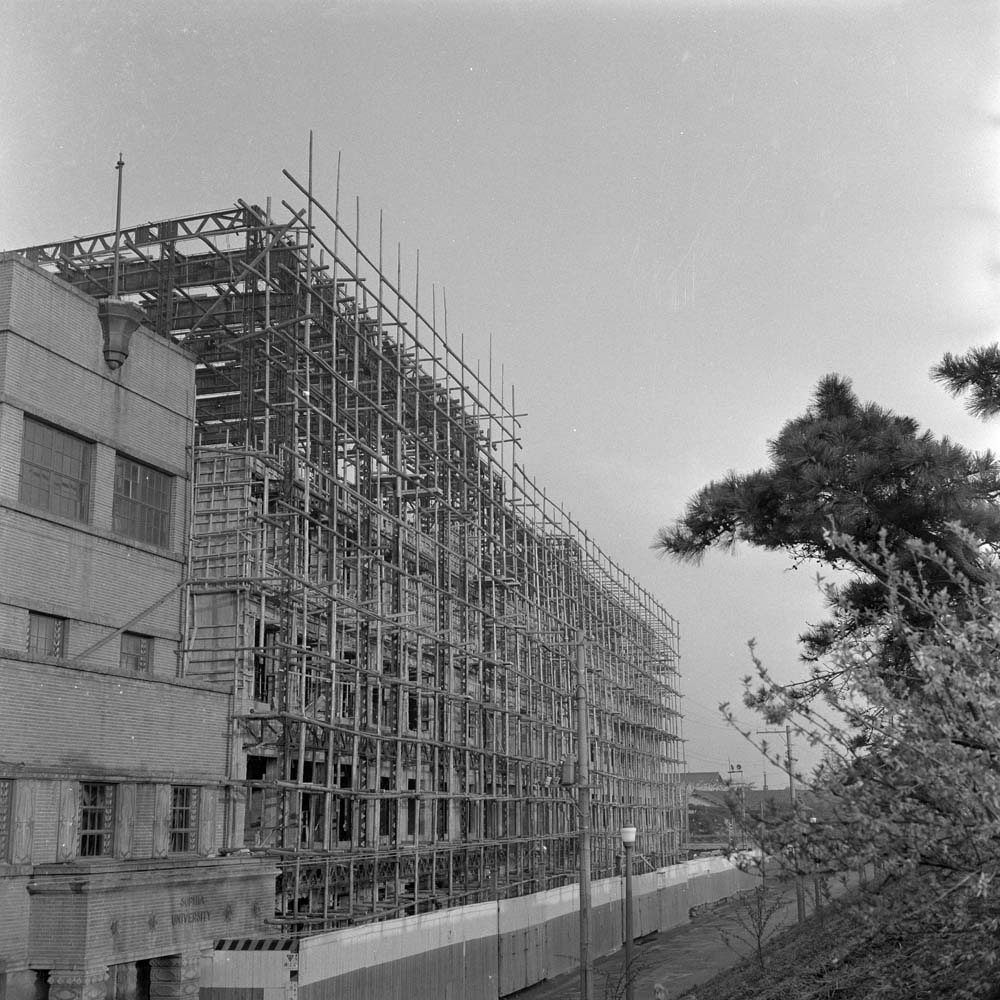
One Sunday in November 1959, 60 plants for 30 yen each were purchased at a flower shop at the south gate of Shinjyuku station. They were someiyoshino tree seedlings about 1 meter tall and as big as a little finger. After spending all the money on the seedlings and running out of train fare, 5-6 junior members of the karate team and he carried the heavy seedlings on their shoulders and walked to the university to bring them back. Then, borrowing a shovel from the university, they planted the trees in the middle of the bank from St. Ignatius Church to the edge of the bank in front of the present Hotel New Otani, spacing them evenly apart with careful planning to avoid having branches snapped off by people passing by.
After graduation, Mr. Satake continued to visit the bank from time to time to watch the plants grow. When he noticed broken or torn seedlings, he would tag each seedling in the dark on his way home from work with a ” Do not damage” sign.
In March 1964, just before the Tokyo Olympics, Akira Fukuda of the Fukuda family, a long-standing restaurant along the bank, donated 100 seedlings to Chiyoda Ward on the 13th memorial service of his mother, and the trees were planted. A total of 160 seedlings grew, and the cherry trees along the Sanada bori formed part of one of the largest rows of cherry trees in Japan, with approximately 330 cherry trees stretching 2.2 km from Kioizaka to Iidabashi Bridge.
2.Relaying to the Next Generation
Currently, cherry trees, mainly Someiyoshino, are planted in Sanada-bori, and most of them are more than 50 years old. Due to aging and the outbreak of pests and diseases caused by environmental changes, the number of weakened trees is increasing. In 2004, Chiyoda City, famous for its cherry blossom viewing spots such as Chidorigafuchi, established a fund to protect cherry trees and pass them on to the next generation, and started the “Ward Flower Sakura Restoration Plan” to protect and restore aging cherry trees by raising supporters.
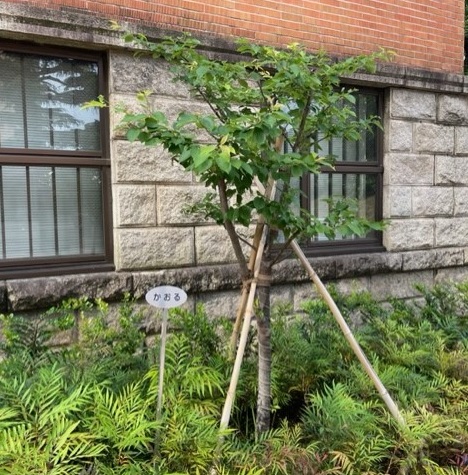
As a part of such activities, the cherry trees at Sanada-bori were surveyed and protected by certified specialists in forestry. Sophia University also organises conservation action seminars and cultural seminars on cherry blossoms, and is still inviting participants to help with surveys. In 2013, three saplings were transplanted to the university campus as part of the 100th anniversary project.The saplings of the three trees were donated by the Sophia Alumni Association. The scions were collected, grafted, and grown into 1-meter-long saplings. They are named “Hibiki,” “Kaoru,” and “Ibuki,” respectively.
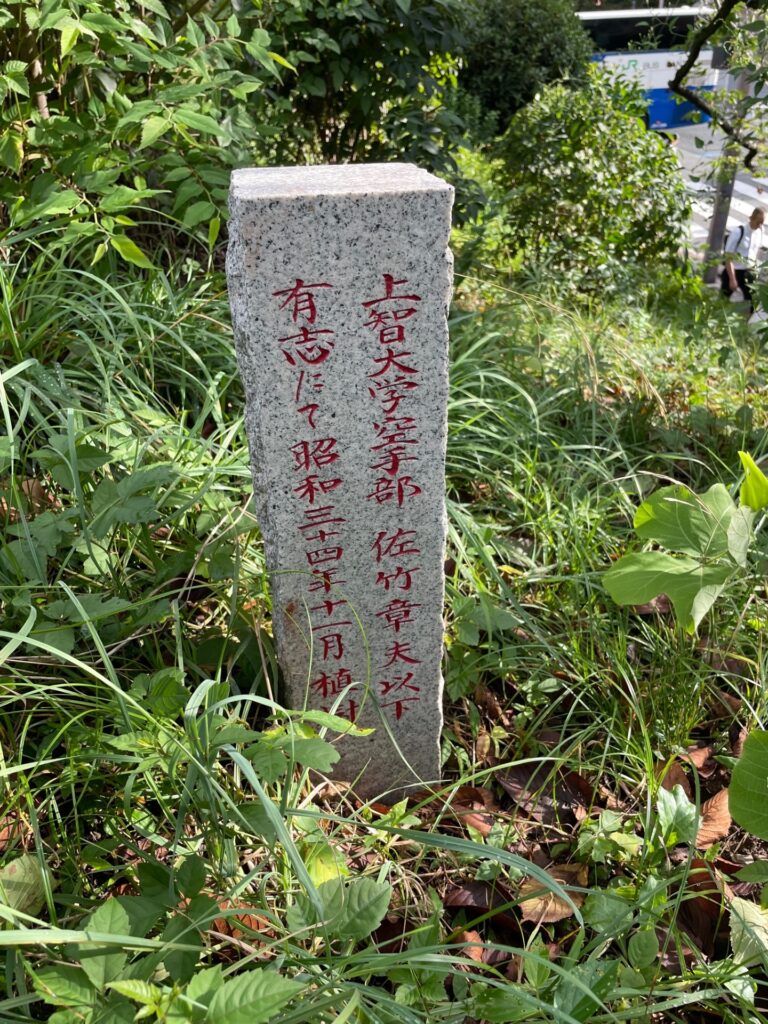
We hope to watch over and nurture these young cherry trees on the premises and eventually plant them back on the bank. They will take root and bloom on the bank again, sending a cheer to the people. The thoughts that Mr. Satake and others had for their alma mater with the cherry blossoms will be passed on to future generations.
Photos marked with an asterisk (*) are in the collection of the Sophia Archives.